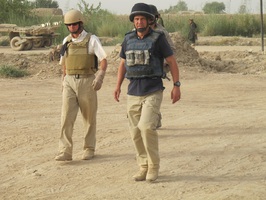Understand
A Learning Organisation?
On a recent exercise the staff were instructed to gather for a debrief. They duly assembled and around 200 people sat back to hear the lessons learned and most importantly make their comments on how things could be improved.
At the front sat the seniors. They were at the centre of the process so not unsurprisingly were keen to present their view. It was largely valid stuff which needed to be said but around 190 others took no active part. Perhaps they had nothing to say but I doubt it.
Getting to know you
How long does it take to get to know someone? Well, it depends on the individuals involved and the circumstances of the relationship but what does that translate to in terms of days and weeks? And where is it all leading? Are the lucky recipients of our attention going to find themselves on a targetting list or on the receiving end of a £100,000 development grant. Either way we better hope we get it right.
The man in the photo is a case in point. A turned Taliban fighter he joined the Government sponsored Afghan Local Police. In this role he was invited to take a look at an ISAF surveillance tower where the first thing he did was work out where his house was and how much of it could be seen through the poweful optics. A few days later he shot his men whilst they were sleeping, gathered their weapons and rejoined his erstwhile colleagues. Why did he do this? Only he will know for certain but it most likely had more to do with his own long term survival. As the British drawdown increased in pace was he looking forward to the day of reckoning when the local warlords again ruled the roost. Should we have been surprised?
The 'understand' phase of our planning is critical. Without it everything we do is built upon assumption. And yet in our rush to create a believable product we lose patience and skip over the challenge of truly understanding who we are working with. The Intelligence Analysts are presented with the unenviable task of producing a credible analysis of the local culture and to do this they need time. It is a commodity they rarely receive and their initial assessment becomes the accepted orthodoxy. And then eventually comes the inevitable step of having to talk to our poorly understood enemy who we have painted into a corner. What on earth do we say?
.


